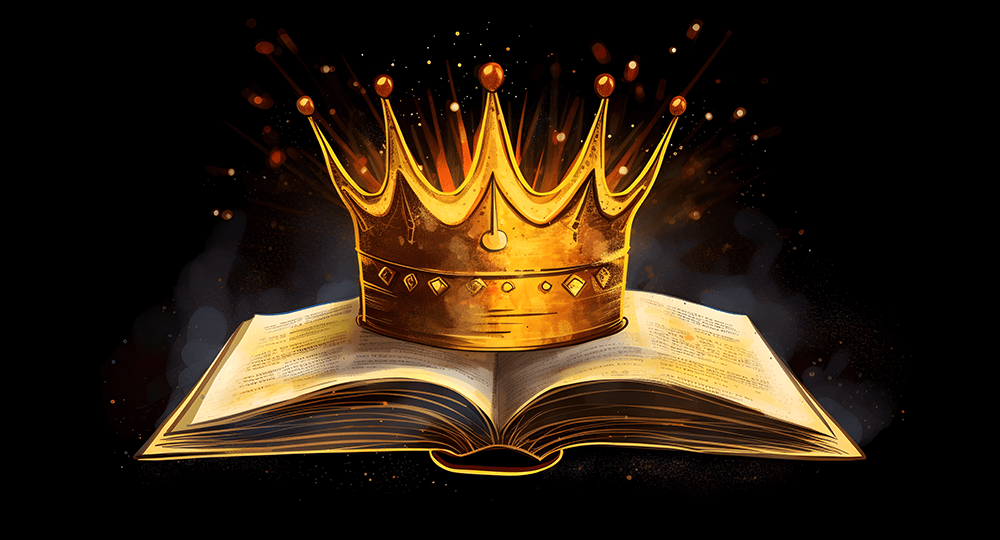The Gospel of the King
What better way to tell the Jewish people their King had come than by referencing the Jewish Scriptures? And that’s exactly what Matthew did.
Many people are confused by the relationship between the Hebrew Scriptures (Old Testament) and the New Testament. Both were penned by Jewish men (some scholars say Luke converted to Judaism) under the inspiration of the Holy Spirit, and they are firmly intertwined.
The New Testament constantly references the Jewish Tanakh (the Law, Prophets, and Writings). It has been said that the Old Testament is the New Testament concealed, and the New Testament is the Old Testament revealed. The two are not separate entities. Together, they provide God’s progressive revelation from creation to restoration.
Of the four Gospels (Matthew, Mark, Luke, and John), Matthew quotes the most Jewish Scripture because his primary goal was to present Jesus to the world as the promised Jewish King. Wrote Dr. Stanley D. Toussaint,
Such subjects as the law, ceremonial defilement, the Sabbath, the Kingdom, Jerusalem, the Temple, David, the Messiah, the fulfillment of Old Testament prophecies, and Moses are all discussed from the Jewish viewpoint for the Jewish readers.1
Consequently, famed British Bible scholar W. Graham Scroggie noted that Matthew contains “129 Old Testament references: 53 of them are citations, and 76 are allusions.”2 That is a substantial number of Old Testament references in 28 chapters.
The Begats and the Birth
Matthew, whose given name was Levi, opened his Gospel with the genealogy of the King, tracing Jesus’ heritage from the Jewish patriarchs Abraham, Isaac, and Jacob.
Genealogies in the Bible traditionally follow the male family members, as this one does; but the inclusion of four women provides additional insight into Jesus’ lineage: Tamar (Gen. 38:1–30), Rahab (Josh. 2; 6), Ruth (Ruth 1—4), and Bathsheba (2 Sam. 11—12). The biblical accounts of these women were well known to the Jewish people. The first three—all Gentiles—were direct ancestors of King David.
Bathsheba, of course, is associated with David’s sin of adultery and murder. God punished David severely but also showed him grace and mercy by blessing him and Bathsheba with their son Solomon.
By mentioning these women, Matthew reminded the Jewish people of their somewhat sordid history and the fact that the pathway to salvation through the Messiah is filled with both their sin and God’s grace.
As Matthew 1 unfolds, the first Hebrew Scripture quoted is Isaiah 7:14: “‘Behold, the virgin shall be with child, and bear a Son, and they shall call His name Immanuel,’ which is translated, ‘God with us’” (Mt. 1:23). Matthew associated this prophecy with Mary, Jesus’ Jewish mother.
Names in the Bible often reflect an individual’s character. Jesus was not officially named Immanuel; but this name, or title, is literally who He was while on Earth. He was God dwelling physically with His people, Israel.
Matthew also quoted Micah 5:2 to show the prophecy concerning the location of the Messiah’s birth was fulfilled with Jesus: “But you, Bethlehem, in the land of Judah, are not the least among the rulers of Judah; for out of you shall come a Ruler who will shepherd My people Israel” (Mt. 2:6).
Then he quoted a disturbing passage from the prophet Jeremiah that prophesied about the mass murder of Jewish male children in Bethlehem: “A voice was heard in Ramah, lamentation, weeping, and great mourning, Rachel weeping for her children, refusing to be comforted, because they are no more” (v. 18; cf. Jer. 31:15). Determined to kill Jesus, the paranoid ruler Herod ordered all Jewish boys ages 2 and under murdered.
A Light to the Gentiles
When Jesus returns at His Second Advent, He will bring peace and justice to a planet that has neither. Matthew quoted Isaiah:
That it might be fulfilled which was spoken by Isaiah the prophet, saying: “Behold! My Servant whom I have chosen, My Beloved in whom My soul is well pleased! I will put My Spirit upon Him, and He will declare justice to the Gentiles. He will not quarrel nor cry out, nor will anyone hear His voice in the streets. A bruised reed He will not break, and smoking flax He will not quench, till He sends forth justice to victory; and in His name Gentiles will trust” (Mt. 12:17–21; cf. Isa. 42:1–4).
It should come as no surprise to Jewish people that their Messiah would impact the Gentile world because the Hebrew Scriptures make that fact clear:
Genesis 49:10: “The scepter shall not depart from Judah, nor a lawgiver from between his feet, until Shiloh comes; and to Him shall be the obedience of the people [Gentiles].”
Isaiah 42:6: “I will keep You and give You as a covenant to the people, as a light to the Gentiles.”
Isaiah 49:6: “It is too small a thing that You should be My Servant to raise up the tribes of Jacob, and to restore the preserved ones of Israel; I will also give You as a light to the Gentiles, that You should be My salvation to the ends of the earth.”
Coming Again
Jesus will return bodily to Earth, this time to rescue the Jewish people from destruction at the hands of their greatest enemy, Satan.
As Jesus lamented over Jerusalem, telling the Jewish leadership that it didn’t understand who He was, He declared, “See! Your house is left to you desolate; for I say to you, you shall see Me no more till you say, ‘Blessed is He who comes in the name of the Lord!’” (Mt. 23:38–39). He was quoting Psalm 118:26.
In Matthew 24, Jesus described the future seven-year Tribulation that the prophet Jeremiah called “the time of Jacob’s trouble” (Jer. 30:7). He specifically cited Daniel 9:27: “‘When you see the “abomination of desolation,” spoken of by Daniel the prophet, standing in the holy place’ (whoever reads, let him understand), ‘then let those who are in Judea flee to the mountains’” (Mt. 24:15–16).
All the nations will attack Israel, and the Jewish people will be on the verge of annihilation when “the sign of the Son of Man will appear in heaven, and then all the tribes of the earth will mourn, and they will see the Son of Man coming on the clouds of heaven with power and great glory” (v. 30).
At that moment, Israel will recognize its Savior and King. As the prophet Zechariah wrote, “They will look on Me whom they pierced. Yes, they will mourn for Him as one mourns for his only son, and grieve for Him as one grieves for a firstborn” (Zech. 12:10). Jesus will save Israel, obliterate its enemies, and rule on the throne of David forever.
All these events appear in the Hebrew Scriptures, scattered throughout the prophets. The Old and New Testaments fit together like pieces of a puzzle, which is why we need to read the entire Bible to understand God’s grand, eternal plan from creation to restoration.
ENDNOTES
-
-
- Stanley D. Toussaint, Behold the King (Grand Rapids, MI: Kregel, 1980), 16.
- W. Graham Scroggie, cited in Toussaint, Ibid.
-








